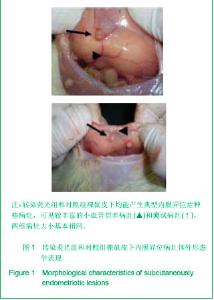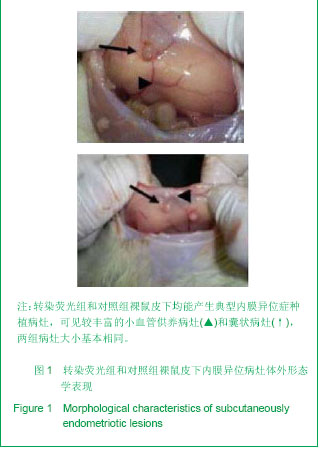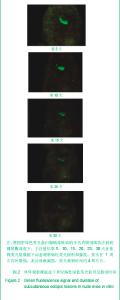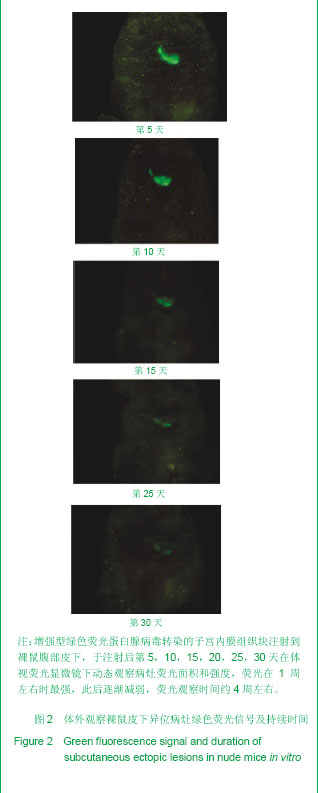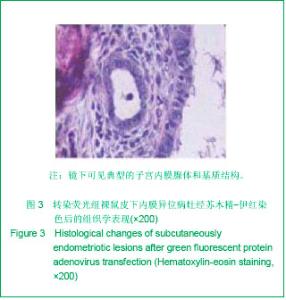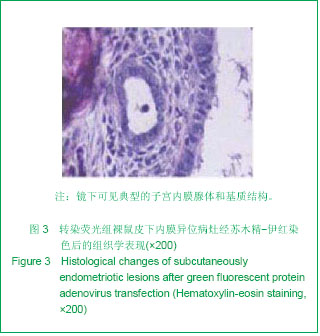| [1] do Amaral VF, Dal Lago EA, Kondo W,et al. Development of an experimental model of endometriosis in rats. Rev Col Bras Cir. 2009;36(3):250-255. [2] Bruner-Tran KL, Webster-Clair D, Osteen KG. Experimental endometriosis: the nude mouse as a xenographic host. Ann N Y Acad Sci. 2002;955:328-339.[3] Tabibzadeh S, Miller S, Dodson WC,et al. An experimental model for the endometriosis in athymic mice. Front Biosci. 1999;4:C4-9. [4] Lenhard SC, Haimbach RE, Sulpizio AC,et al. Noninvasive assessment of ectopic uterine tissue development in rats using magnetic resonance imaging. Fertil Steril. 2007;88(4 Suppl):1058-1064.[5] Hascalik S, Celik O, Kekilli E,et al. Novel noninvasive detection method for endometriosis: research and development of scintigraphic survey on endometrial implants in rats. Fertil Steril. 2008;90(1):209-213.[6] Liu B, Wang NN, Wang ZL,et al. Improved nude mouse models for green fluorescence human endometriosis. J Obstet Gynaecol Res. 2010;36(6):1214-1221.[7] Gao LY,Hou Z,Zhou J,et al. Jiangsu Yiyao. 2008; 34(5): 475-477.高李英,侯振,周静,等.人子宫内膜异位症可视化动物模型的建立[J]. 江苏医药,2008, 34(5):475-477.[8] Yang YA,Hua JL,Dou ZY. Caoshi Jiachu. 2004(2):23-27.杨玉艾,华进联,窦忠英.绿色荧光蛋白在胚胎干细胞研究中的应用[J].草食家畜, 2004(2):23-27.[9] Wang DB, Zhang SL, Niu HY,et al. A nude mouse model of endometriosis and its biological behaviors. Chin Med J (Engl). 2005;118(18):1564-1567.[10] Yang M, Baranov E, Jiang P,et al. Whole-body optical imaging of green fluorescent protein-expressing tumors and metastases. Proc Natl Acad Sci U S A. 2000;97(3): 1206-1211.[11] Tran Cao HS, Reynoso J, Yang M,et al. Development of the transgenic cyan fluorescent protein (CFP)-expressing nude mouse for "Technicolor" cancer imaging. J Cell Biochem. 2009;107(2):328-334. [12] Hirata T, Osuga Y, Yoshino O,et al. Development of an experimental model of endometriosis using mice that ubiquitously express green fluorescent protein. Hum Reprod. 2005;20(8):2092-2096. [13] Fortin M, Lépine M, Pagé M,et al. An improved mouse model for endometriosis allows noninvasive assessment of lesion implantation and development. Fertil Steril. 2003;80 Suppl 2:832-838. [14] Grümmer R, Schwarzer F, Bainczyk K,et al. Peritoneal endometriosis: validation of an in-vivo model. Hum Reprod. 2001;16(8):1736-1743.[15] Liu B,Wang NN,Hong SS,et al. Zhongshan Daxue Xuebao. 2010;31 (2) :298-301.刘斌,王宁宁,洪珊珊,等.裸鼠人绿色荧光子宫内膜异位症模型的构建[J]. 中山大学学报:医学科学版,2010,31 (2) :298-301. |
